Bernard Frize
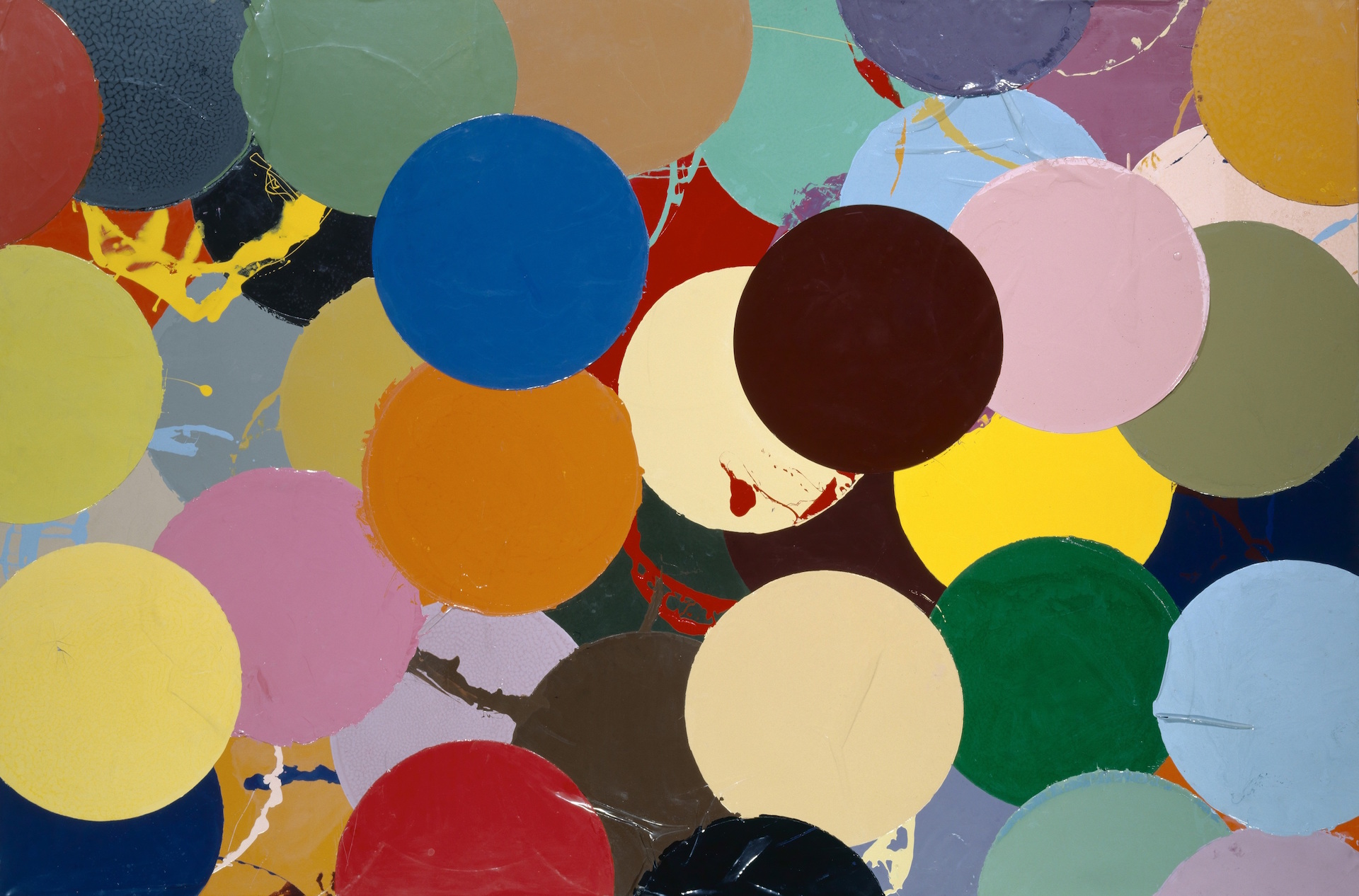
From the Operator’s Seat
Frize works in disparate series. In his œuvre there are no emblematic forms, with the possible exception of his pictures made with what he calls “painted” brushes (meaning that several colours are applied to the brushes and, once they are applied to the canvas, they leave a multi-coloured imprint). Each series is associated with a particular kind of procedure, and is an attempt to exhaust a set of possibilities peculiar to it, composition-wise. By frequently changing his way of doing things, Frize tries to avoid what he calls the “personification of abstraction”. By simultaneously showing everything, the retrospective show at the Centre Pompidou redoubled the intent of the work itself by being, itself, a struggle against style, and signature. It was an all-over retrospective, with no hierarchy between the old and the new, the abstract and the figurative, the large and the small, overlapping the exhibition arrangement with the principles of the paintings.
People generally reckon that Frize is an “abstract” painter, but a certain number of paintings from the early years are figurative and, in a more general way, each series can also be seen as an effort to make this distinction problematic. The series of “professions” is part of the figurative pictures, in the literal sense. In these pictures, such as Max Dormoy, the symbols of different professions float on dark backgrounds. These figures were first painted on bits of plastic and then laid, or “transferred” (as we would say if what was involved was transferring figures onto a piece of clothing) onto the canvas. In this case, the images were found and reproduced all over the picture, with no apparent order. As ever, the technique used is relatively simple. In the “pots” series, which Article japonais is part of, the technique used for the background is made of crackle lacquer—a type of paint used in decoration to simulate the age of the painted object. If the Japanese object actually has nothing Japanese about it, on the other hand it has something to do with the image of art itself, and with what “makes” art: the cracks, the old, antique look. And this applies metaphorically to all the images the artist uses: they are generic images, images which signify them all. Paintings like Rami and Emir, to take just two examples in another series, produce this extraordinary thing which is the “illusion of an image”, as it happens an illusion of landscape. The drips and flows, the chemical bath in which the different types of paints used interact, the angle of the canvas after the application, all this ends up producing an image, an image which, strictly speaking, is not an image, but which nevertheless conjures up the mountainscapes of Chinese painting. The title, Emir, invites us to make a comparison with the world of mirages, while the effect of Rami underscores the role of chance in its making—an interplay of combinations, obtained from rules but retaining a random element. The same kind of involuntary illusion was already at work in his very earliest paintings, those made with the help of “traînards” , a kind of extremely fine brush, with the strictly abstract composition having in the end the look of flecked fabric. Conversely, the series made shortly thereafter with printing rollers makes the most of the tool to get rid of the image by saturation, and by multiplying the actions. More recently, with Oude, the image is obtained by the destruction of another image coming before it. In a word, for one lost illusion, there is one re-found. Not using images is tantamount to creating one, while accumulating them makes them disappear, or merges them in just one. These illusions of images, in the case of the involuntary landscapes, or the illusion of their disappearance through excess, are a way of asserting the nature of abstraction as an image. Once it exists, the painting makes an image, with or without a figure.
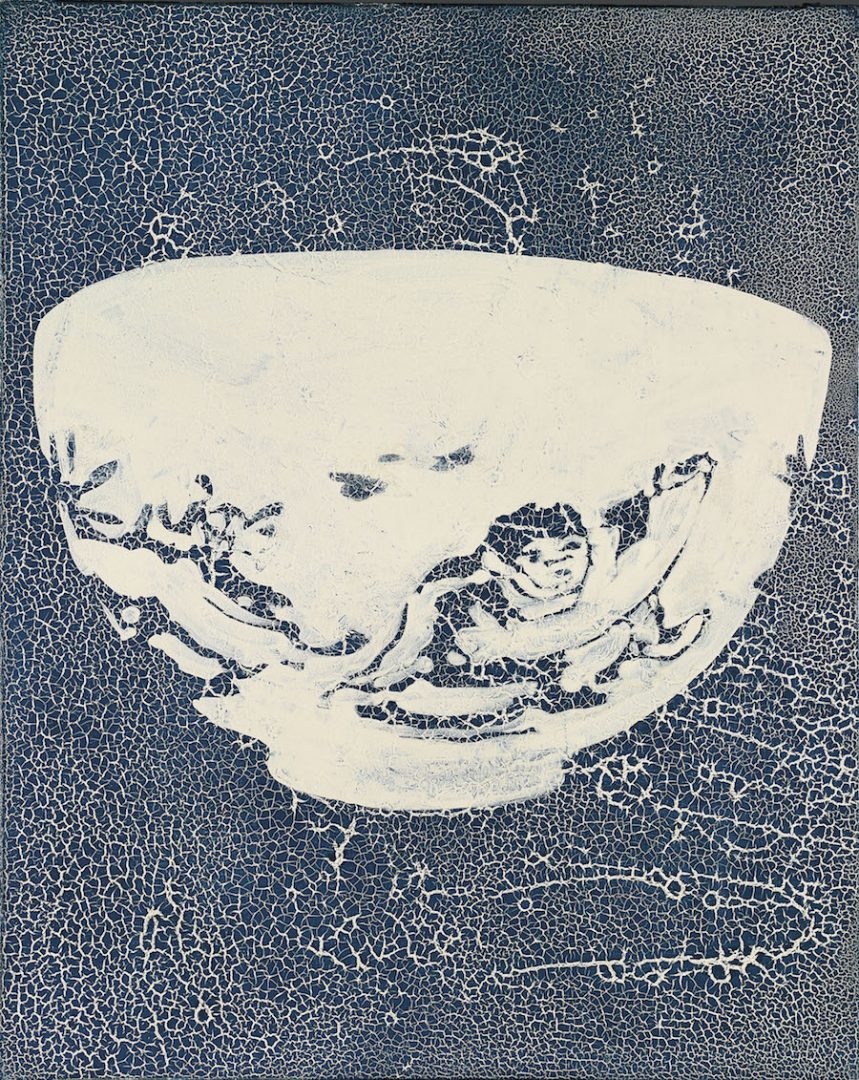
So we can understand the frequent use of white backgrounds in his pictures as a graphic reference to the world of imagery—a sensation linked with the white ground of a certain number of pictures, which conjures up the white backdrop of the page, the background against which the forms and illustrations stand out, reinforcing the sensation of flatness. These ambiguities about the image have the effect of emphasizing the material nature of things and the way they are made. This anti-illusionism has a purpose, which is to bring things forth, and index the economy of the picture—otherwise put, the way in which the painting is organized and produced.
“Painting is a physical task (a mechanical art), whose productive economy I try to make the best use of. The experience level overlaps with the image of the result. The forms are those of colour distribution, and the conception of all its effects (consequences) is that of the conception of the image. I don’t even know if there is an image. There’s the recording of an event and an indexation of its rules: which is a picture.”1
Some pictures, by way of their titles, are, incidentally an allusion to this idea, such as Standard and Poor’s, named after the financial rating agency which in particular publishes the index of the main share prices on the New York Stock Exchange. As an additional irony, the picture dates from the year of the great stock market crash of 1987. But here, needless to say, the picture is just the clue to itself, indifferent to the abstract ups and downs of the stock market. For Frize, the process, and the fact that it is left for all to see in the finished picture, is not an end in itself, but a way of highlighting “the order and materiality of which perceptible experiences are made.”
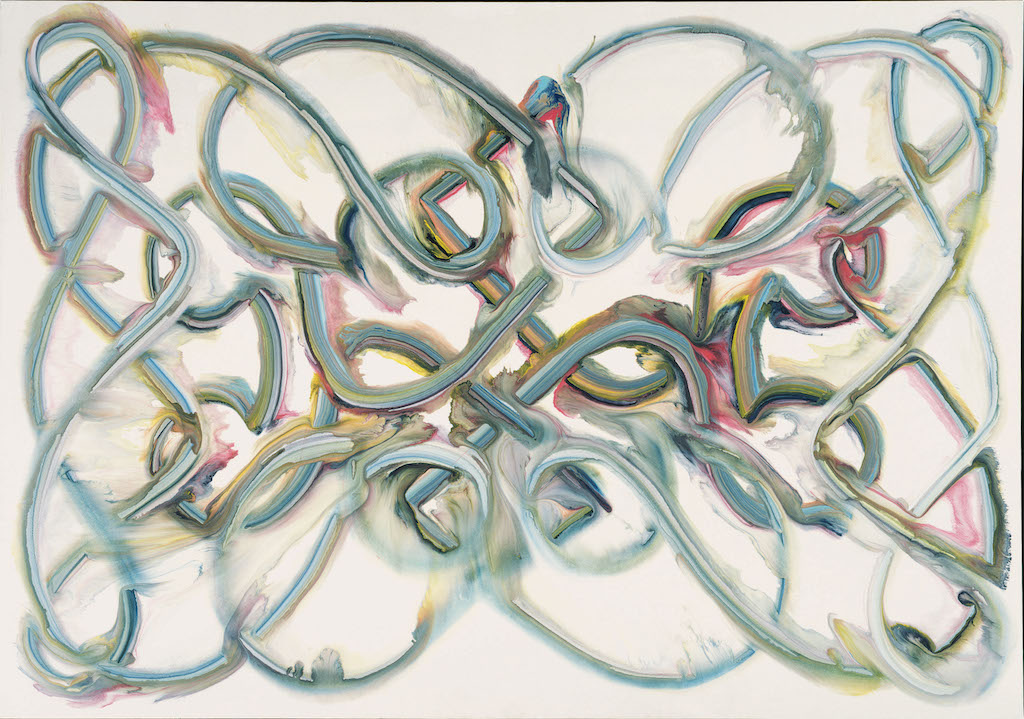
It is possible to detect in these preoccupations a connection with a whole swathe of 1960s’ art. But if we were to compare the processes that Frize imposes upon himself, involving the Sol LeWitt method, for example—the idea as a “machine that makes art”—, the great difference would be that the result is neither foreseen, nor foreseeable. If the idea (or the procedure) is a machine, it is, in his case, dysfunctional. Frize says he does not know anything about the aesthetic result—this is what he says, but it is also what we can see. Some paintings look like flops, or common-or-garden works. What he is looking for, through self-imposed rules, is a sort of indifference to what comes about, but not towards the way it comes about, the goal being to be freed from the grip of decision-making, by adopting a definite method before the fact. He also says he spends a not inconsiderable percentage of his time coming up with strategies which enable him not to become involved, and to paint as lazily as possible. For example, he often has recourse to procedures based on problems of mathematics or chess. He has, for example, drawn inspiration from a classical problem such as the Seven Bridges of Königsberg for the composition of pictures, and a chess problem for the making of Spitz. (The problem being: is it possible for the knight to cover all the squares of the chessboard and, in so doing, what drawing produces all its moves?)
In both cases, we can note that it is a matter of exhausting the possibilities of movement on a flat surface akin to that of the picture. In his painting, Frize starts from a logical basis which helps him to obtain compositional solutions based on a rule, be it in the layout or the use of colours, their repetition or, on the contrary, their variation. Talking about “solutions” in painting may seem very scientistic, but the intention, it just so happens, is different. Logic does not guarantee the making of the “best” painting (“scientifically” certified as such), it is a literal solution—the resolution of a trivial issue: what to paint, and how to paint it.
“The subject of my work is not to create processes and rules, they are solely means for doing my work and wanting to work. Painting is a way of exploring ideas and giving them a body to inhabit, so as to be seen and shared.”2
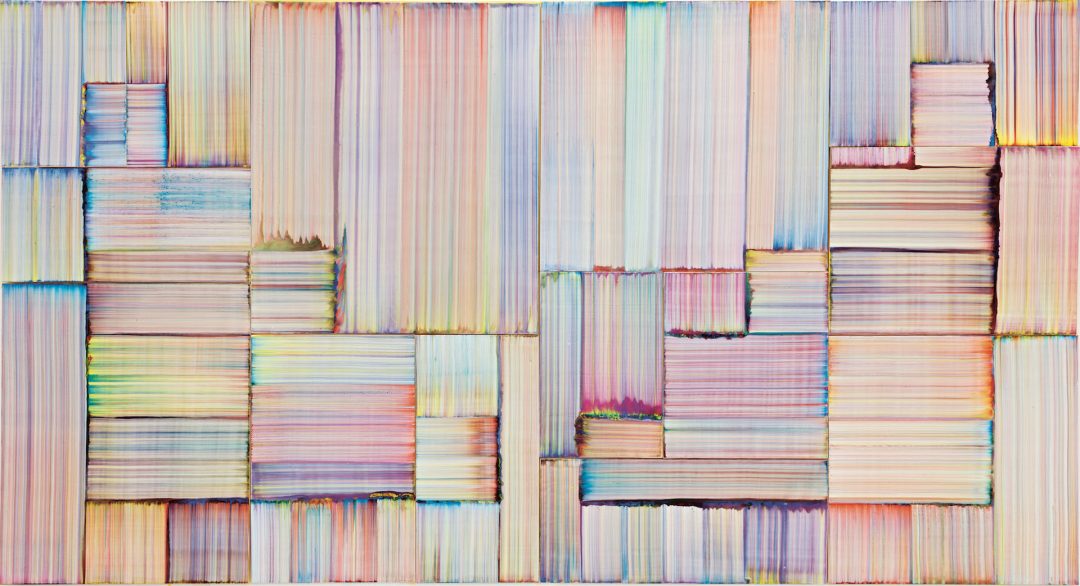
The aim is to do as little as possible, and not to lay claim to anything scientific; he tries to introduce situations in which he has nothing more to do, and where things happen “by themselves”. The technique involving the painted brushes, which help him to apply these multi-coloured lines, is also a way of not choosing—of acting in such a way that the mixture of colours eludes the artist. Traditionally, the palette is the place where colours are mixed. Here, it is the canvas which assumes the function of mixer. Sometimes chance produces the procedure, caused by an accident in the studio. This is the case with the paintings in the Suite Segond, made of collages of films of dried paint formed on the surface of paint pots that have been left open. The technique used with the Six Premières épreuves starts from the same principle, it involves the films of paint obtained from a mixture of colours in the same tray, which acts in a way like an image developer, as directly as you would do with photographic equipment.
This quest for non-choice is further accentuated by the collective making of certain pictures, what is more by people with no particular know-how when it comes to painting. This twofold rejection of control can only with difficulty better signify that it is not there, in the search for technical mastery, that his work is played out. In addition to displaying a rejection of the idea of mastery and “personalization” of abstraction, the collective (and egalitarian) work is another way of linking the work to the economy of the painting, and the symbolism of the approach is clearly not devoid of a political dimension. In this respect, if Frize says that the titles of his painting do not mean anything, it must nevertheless be added that some do mean more or less “nothing” than others, like, for example, Conducteur 0. The French term “conducteur”, [i.e. machine operator], evokes the function of the person who, in industry, operates a machine, indicating, by the same token, an affinity with a way of doing things in an ordinary, workmanlike way.
Frize’s empathy for the ordinary and for simplicity is perhaps what caused a critic to say, during his first show in London: “They may not be Conceptual, but Frize’s dumb paintings ain’t so dumb.”3 Thanks for that, but we may well wonder about the presuppositions of this nothing if not mixed judgment. To start with, what is a “conceptual” painting? Because Conceptual art is usually associated with discrediting painting (and this even if a certain number of the most eminent representatives of it—John Baldessari, Robert Barry, Lawrence Weiner…—were painters before being “conceptual”), the wording may seem paradoxical, and we may thus suppose that the critic meant by conceptual painting a self-reflexive painting of “ideas”, displaying in its very composition its intentions, its limits, and its place in culture. The next question is: by this count, what painting is not conceptual, ever since the Renaissance? What David Barrett calls ‘dumb’ must in fact be taken in a strong, positive sense, without there being any need to link Frize’s paintings with one form or another of Conceptual art. Dumb means that the painting is just what it is, a naked reality, and its interest lies precisely in highlighting the work rather than the cultural capital.
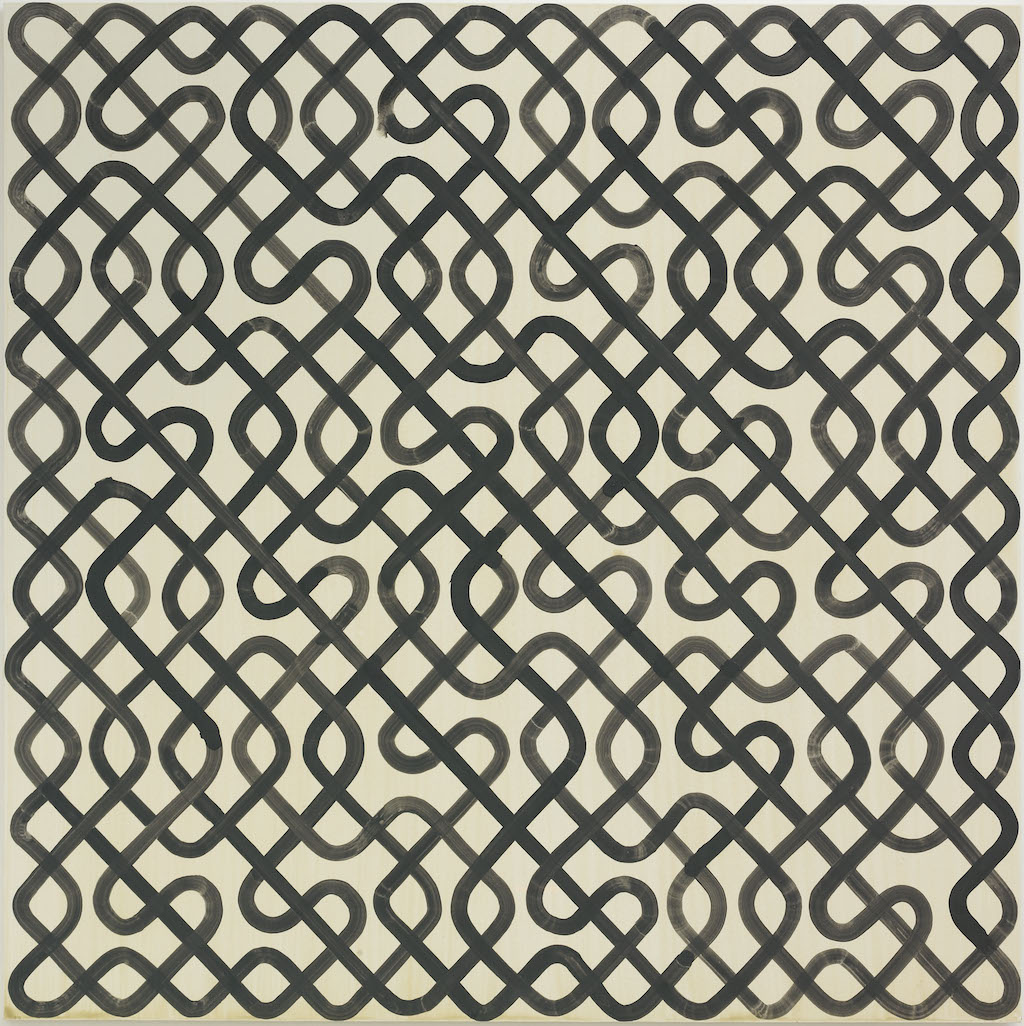
Frize has said himself about some of his paintings that they were dumb. In his mind, this adjective is associated with the ordinary, and with his indifference about the aesthetic result.4 His compositions, whether schematic or otherwise, enable viewers to mentally reconstruct the way his paintings have been made. The “signature” of the tools used (roller, spray, brush…), as the scientific police would put it, is also very distinct, managing to demystify the act of painting. “I’m not Houdini, I’m not an illusionist, I don’t make magic, but things that are totally realistic.”5 If we put ourselves within a longer historical perspective, we may remember that, leaving aside the matter of subjects, what set Academicism apart from “modern” movements like Realism was a concern to forget about manual work, and make it invisible by the application of systematic glazes. The emphasis on artistic means is what links Frize with this realist tradition, and it is not haphazard that Courbet is among the painters he most admires.6
After underscoring how he sought to make use of protocols to be followed “in order not to choose”, it is interesting to also pay attention to the other implications of expressions using what is, it just so happens, chosen: “first choice”, a “chosen” language, “chosen pieces”, etc. These expressions are part of the vocabulary of distinction, they point to excellence. They imply that value is a function of choice. And luxury entirely relies on this principle of exclusivity, of the “highly” chosen. Frize takes another tack, which we can readily connect with Realism, which is that of the commonplace. Operators have succeeded stone-breakers, and, in his desire to be “like everyone else”, Frize has adopted, in his painting, both the procedures and the means to help him to that end.
1 Bernard Frize, “Quoi, Pourquoi, Quand, Comment, Où et Qui”, in exh. cat. Bernard Frize. Sans repentir, Dilecta / Centre Pompidou, Paris, 2019, p. 189. Initially published in 2010 in the exh. cat. And How and Where and Who (Morsbroich Museum, Leverkusen), Ostfildern, Hatje Cantz.
2 Bernard Frize, in Sans repentir, op. cit. note 1, p. 96.
3 David Barrett, in his review of the exhibition at the Frith Street Gallery, London, in Frieze n°26, 1996.
4 Cf. Jean-Pierre Criqui, “Quelques mots à propos de “Suite au rouleau” et du reste. Entretien avec Bernard Frize”, Cahiers du MNAM #86, Centre Pompidou, Paris, p. 96 : « Il n’y a pas d’harmonie, seulement une construction, c’est une peinture idiote, en fait, c’est absolument absurde. C’est pour cela que j’ai dit que c’était une chose ordinaire. C’est assez peu artistique » / “There is no harmony, just a construct, it’s a dumb sort of painting, in fact it’s absolutely absurd. This is why I’ve said that it was something ordinary. It’s not very artistic at all.”
5 Bernard Frize, in Sans repentir, op. cit., interview with Angela Lampe, p. 141-142.
6 Cf. Jean-Pierre Criqui, “Les vertus de l’incongruité : une conversation avec Bernard Frize”, Artforum, Oct. 1993.
(Image on top: Bernard Frize, Suite Segond 120F, 1980. Urethan alkyd lacquer on canvas, 130 × 195 cm, Kunstmuseum Basel. © Bernard Frize / Adagp, Paris 2019. Photo © Kunstmuseum Basel, Martin P. Bühler.
Related articles
Iván Argote
by Patrice Joly
Laurent Proux
by Guillaume Lasserre
Diego Bianchi
by Vanessa Morisset

